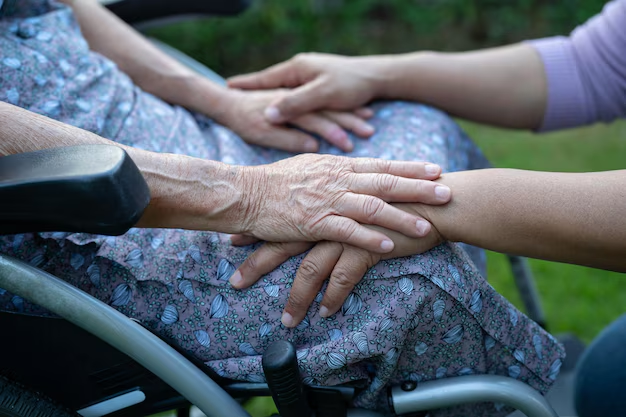Understanding Parkinson’s Disease: Who Is Affected?
Parkinson's disease, a progressive neurological disorder, affects millions of people worldwide. If you've heard of this condition but wondered who it impacts, you're not alone. Let's delve into the intricacies of Parkinson’s disease to understand who is affected and how it impacts lives.
What is Parkinson’s Disease?
Parkinson’s disease is a chronic and progressive disorder of the nervous system that primarily affects movement. It results from the degeneration of dopamine-producing neurons in the brain. Dopamine is crucial for smooth and coordinated muscle movements, which is why the loss of it leads to the common symptoms associated with Parkinson’s.
Common Symptoms
- Tremors: Noticeable shaking, often beginning in a hand or fingers.
- Bradykinesia: Slowness of movement, making simple tasks difficult.
- Muscle Rigidity: Increased muscle stiffness can occur in any part of the body.
- Impaired Balance: Postural instability may lead to falls.
Who is Most Likely to Develop Parkinson’s Disease?
Age-Related Factors
Parkinson's primarily affects older adults. Most people who develop the disease are over the age of 60, although 5-10% of cases are diagnosed before age 50. This is referred to as "young-onset Parkinson's."
Gender and Genetic Factors
Men are 1.5 times more likely to develop Parkinson’s than women. Genetics also plays a significant role, with familial Parkinson's seen in about 15% of cases, where the condition runs in families due to inherited gene mutations.
Environmental Factors
While genetic factors are crucial, environmental triggers such as exposure to certain toxins and pollutants have been linked to an increased risk of Parkinson’s. Agricultural pesticides, industrial pollution, and drinking well water have been studied for their potential connections to the disease.
Tip: Always consider environmental influences as contributory risk factors and discuss these with healthcare providers if concerned.
The Impact of Parkinson’s Disease
Parkinson’s doesn't only affect movement. Its reach extends into various aspects of health and daily life.
Cognitive and Psychological Effects
Some people with Parkinson’s experience cognitive changes, which can range from mild to severe. Depression and anxiety are also common as individuals grapple with the diagnosis and ongoing adjustments in their lives.
Social and Economic Aspects
The disease can lead to reduced independence, affecting everything from employment to social activities. Financial strain may also occur due to medical expenses and the potential need for caregivers.
Quality of Life Considerations
Living with Parkinson’s can be challenging, but early intervention, therapy, and support can significantly enhance quality of life. Understanding and adapting to the condition helps maintain a fulfilling life despite its constraints.
Medical Advancements and Support
While Parkinson's disease progresses differently in each individual, there are treatments and therapies that can help manage symptoms.
Medications
Medications such as levodopa and dopamine agonists are commonly prescribed to control symptoms. These drugs aim to replenish or mimic dopamine in the brain to aid motor function.
Innovative Therapies
- Physical Therapy: Enhances mobility and reduces muscle stiffness.
- Speech Therapy: Assists those whose speech is affected by the disease.
- Deep Brain Stimulation (DBS): A surgical procedure that implants electrodes in the brain to regulate abnormal impulses.
Lifestyle and Dietary Adjustments
Adopting a balanced diet, regular exercise, and mindfulness practices can positively impact the management of Parkinson's. These lifestyle changes not only help in dealing with symptoms but also improve overall well-being.
Global Efforts and Resources
Various organizations worldwide provide resources, support, and research funding for those affected by Parkinson’s, such as the Parkinson’s Foundation and Michael J. Fox Foundation. Connecting with these organizations can be a lifeline for obtaining the latest information and community support.
Support Groups and Community
Support groups offer a space for shared experiences and emotional support. Joining a group helps reduce feelings of isolation and builds a community of understanding.
Awareness and Advocacy
Engaging in advocacy increases awareness about Parkinson's and contributes to ongoing research and funding. Increased visibility leads to breakthroughs that improve patient care and treatment options.
Living with Parkinson’s: Empowerment and Next Steps
Being diagnosed with Parkinson’s disease can feel overwhelming. However, a proactive approach to managing and understanding the condition can empower individuals and their families.
Educate and Prepare
- Stay informed about the latest in Parkinson’s research and treatments.
- Consult healthcare professionals regularly to tailor treatment plans.
Connect and Communicate
- Join support networks to share experiences and gather strength from communal knowledge.
- Discuss openly with family and friends to cultivate a supportive environment.
Prioritize Self-Care
- Engage in regular physical activity to maintain strength and flexibility.
- Practice mental wellness techniques such as meditation or yoga.
Remember: Every individual’s journey with Parkinson’s is unique. Tailoring an approach that aligns with personal needs is essential in navigating the complexities of this disease.
In summary, understanding who Parkinson’s disease affects goes beyond basic demographics. Considering genetic, environmental, and lifestyle factors, combined with medical advancements and support systems, offers a comprehensive view of the disease's impact. By actively participating in care and utilizing available resources, individuals with Parkinson’s can lead vibrant, empowered lives.
📝 Key Takeaways:
- Age Factor: Predominantly affects those over 60, but can start earlier.
- Gender & Genetics: More common in men, and familial cases exist.
- Environmental: Exposure to toxins and pollutants may increase risk.
- Wide-ranging Impact: Extends beyond movement to cognitive and social aspects.
- Support & Resources: Community groups and organizations provide valuable assistance.
- Lifestyle Management: Diet, exercise, and therapies make a positive difference.

Related Articles
- Are There Environmental Causes Of Parkinsons
- Can Alcohol Cause Parkinson's
- Can Concussions Cause Parkinson's
- Can Females Get Parkinson Disease
- Can Head Trauma Cause Parkinson's
- Can Parkinson Disease Cause Dizziness
- Can Parkinson's Affect Eyesight
- Can Parkinson's Affect Memory
- Can Parkinson's Affect Speech
- Can Parkinson's Affect Vision